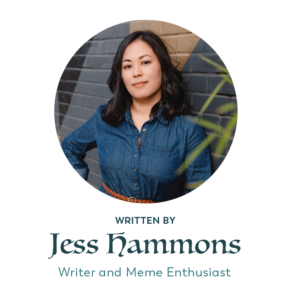We at Uncanny Content talk about blogs a lot. On our own blog, we’ve covered how to optimize blogs for scannability. Writing blog posts that actually convert and work their magic for your biz. And we’ve answered the age old question of how long a blog post should actually be.
The writing part of blogging is super important, of course. But just as important is the design of a blog post. Look at the three blog posts we linked in the previous paragraph. You could say that two of the topics are actually all about format, not the content itself! If your blog post is formatted terribly, you’ll lose readers, no matter how well it’s written.
The structure of a blog post not only matters for your readers, but it’s good for SEO, too. With that in mind, let’s talk about how to structure a blog post below.
Have a strong introduction
You can’t just dive head-first into a blog post without an introduction. Well, you could, but we don’t recommend it. An introduction for your blog post is important because it:
- Maps out what your blog post is about
- Intrigues the reader and keeps them reading
- Explains why a reader should listen to or trust you on the topic
- Can sometimes include a call-to-action (CTA) if appropriate
You don’t have to have all of these elements in every introduction of every blog post you write. If you interviewed another person for your blog, for example, it might feel weird to include a sentence or two about why you’re a voice of authority on the topic. The person you interviewed is probably the authority figure, not you.
There’s no strict length for an introduction, but whether yours is a few sentences or a few paragraphs, don’t dawdle. You can intrigue your reader by teasing what you’ll explain in your post, but take too long to get to the point and your readers will bounce.
Keep paragraphs short
The days of five paragraph essays are over, folks. (Sorry fellow millennials.) Short and easy to read paragraphs are where it’s at. Our attention spans are shorter, and people looking for information online don’t have the patience to sift through long, rambling paragraphs.
We prefer keeping our paragraphs three to four lines long. Breaking them into small, skimmable blocks is less overwhelming, not to mention mobile-friendly.
It is possible to take this too far, though. If you notice yourself writing super short paragraphs where every sentence has its own line, you might’ve unintentionally written broetry. Broetry makes every single sentence dramatic and heavy with meaning, and that gets tiresome.
Don’t be afraid to spice up your writing with short sentences, longer sentences, and one liners. You can also make your post visually interesting with images, bullet points, infographics, or videos. Just keep paragraphs short for skimmability so that your readers continue reading.
Write plainly
Your blog post is not the place for mysterious metaphors, cliffhangers, or paragraph after paragraph of descriptions with no point in sight. If readers wanted that, they’d read a 1000-page classic novel.
Keep your writing plain and simple. You’ll reach a broader audience that way. And your message will come across more clearly. (Oh, and please avoid using jargon in your blog posts. If you have to include jargon, always explain what it means.)
We’re not saying you can’t be creative or witty or smart! And we’re certainly not saying that you have to dumb down your writing. We’re saying that, to attract and retain the most readers in your target audience, it’s best to keep things simple.
Use headings and subheadings
Remember how we just talked about making your blog post skimmable with short paragraphs? Headings and subheadings can do the same thing. They break up your text into visually pleasing and skimmable chunks so readers can find the info they’re looking for.
Headings and subheadings also improve the accessibility of your blog posts. If a person is using assistive technology to read your blog post, headings can mark new sections of content. They can also organize your entire blog and make the information easier to understand.
Finally, headings and subheadings are great places to use keywords. Remember, search engines scan all those pieces of content online to answer someone’s question. If they find a relevant keyword in your headings, they’re more likely to show your blog higher in results.
Have a conclusion
How do you end a blog post? Don’t just end it after you make your last point without wrapping things up or saying goodbye. As introverts, this is a fine way to exit a party, but not a fine way to end your post.
Always have some sort of conclusion to finish your blog post. Sum up all the points you previously made. If it feels right (and not icky or too salesy), include a CTA so that your reader knows what to do next.
Your conclusion does not have to be long, but it’s best to review the info you discussed in your post. Keep in mind that some people skip to the end of your blog post rather than reading the entire thing.
Don’t forget your SEO
Think of SEO, or search engine optimization, as the hidden structure of a blog post. Pay attention to SEO details for your blog posts, and it’ll have a better chance of ranking higher in search engine results and drawing in more site visitors.
Blog length
Google seems to love longer blog posts, because — in theory — people spend more time reading them. For SEO purposes, it’s probably a good idea to keep your blog posts on the longer side.
Remember, we covered how long a blog post should be in its own post, but to refresh your memory, the sweet spot is usually about 1,000 to 2,600 words. But blog posts can be shorter or longer depending on your brand, the topic, and what your audience wants.
Meta description
Your meta description is about 155 characters long. It’s an HTML tag that summarizes your blog content, and it’s shown in search results. To help your blog rank higher in results, use a keyword and write an accurate description. Your meta description should match your blog content.
Meta title
The last piece of your blog SEO puzzle is your meta title. This HTML tag should be about 50 to 60 characters long; that’s how much Google typically displays in results. Make your meta title short, sweet, and straightforward. Include a keyword, too.
Boost good content with good structure
A well-structured blog post improves your blog’s SEO, but it also meets your readers’ needs. It also positions your blog as a trustworthy source of information.
A strong introduction, short paragraphs, and simple writing makes posts easy to read and easy to skim. A conclusion wraps up everything you discussed and encourages readers to take the next step, whether that’s contacting your business or checking out one of your products or services. Finally, your SEO improves your blog post’s visibility and ranking in results.
What you write about on your blog is definitely important, but don’t skimp on the design and delivery of your posts. How you present your blog post can make the difference between holding a reader’s attention, eventually turning them into a customer…or driving them away.
Want our help with your blog structure, content, and promotion? Click here to learn more about our content retainers.

